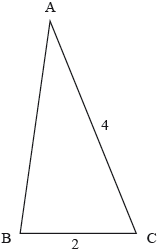| Date | November 2016 | Marks available | 6 | Reference code | 16N.1.AHL.TZ0.H_5 |
| Level | Additional Higher Level | Paper | Paper 1 (without calculator) | Time zone | Time zone 0 |
| Command term | Find | Question number | H_5 | Adapted from | N/A |
Question
The quadratic equation has roots and such that . Without solving the equation, find the possible values of the real number .
Markscheme
* This question is from an exam for a previous syllabus, and may contain minor differences in marking or structure.
A1
A1
(M1)
A1
attempt to solve quadratic (M1)
A1
[6 marks]
Examiners report
[N/A]
Syllabus sections
Topic 2—Functions » SL 2.7—Solutions of quadratic equations and inequalities, discriminant and nature of roots
Show 47 related questions


